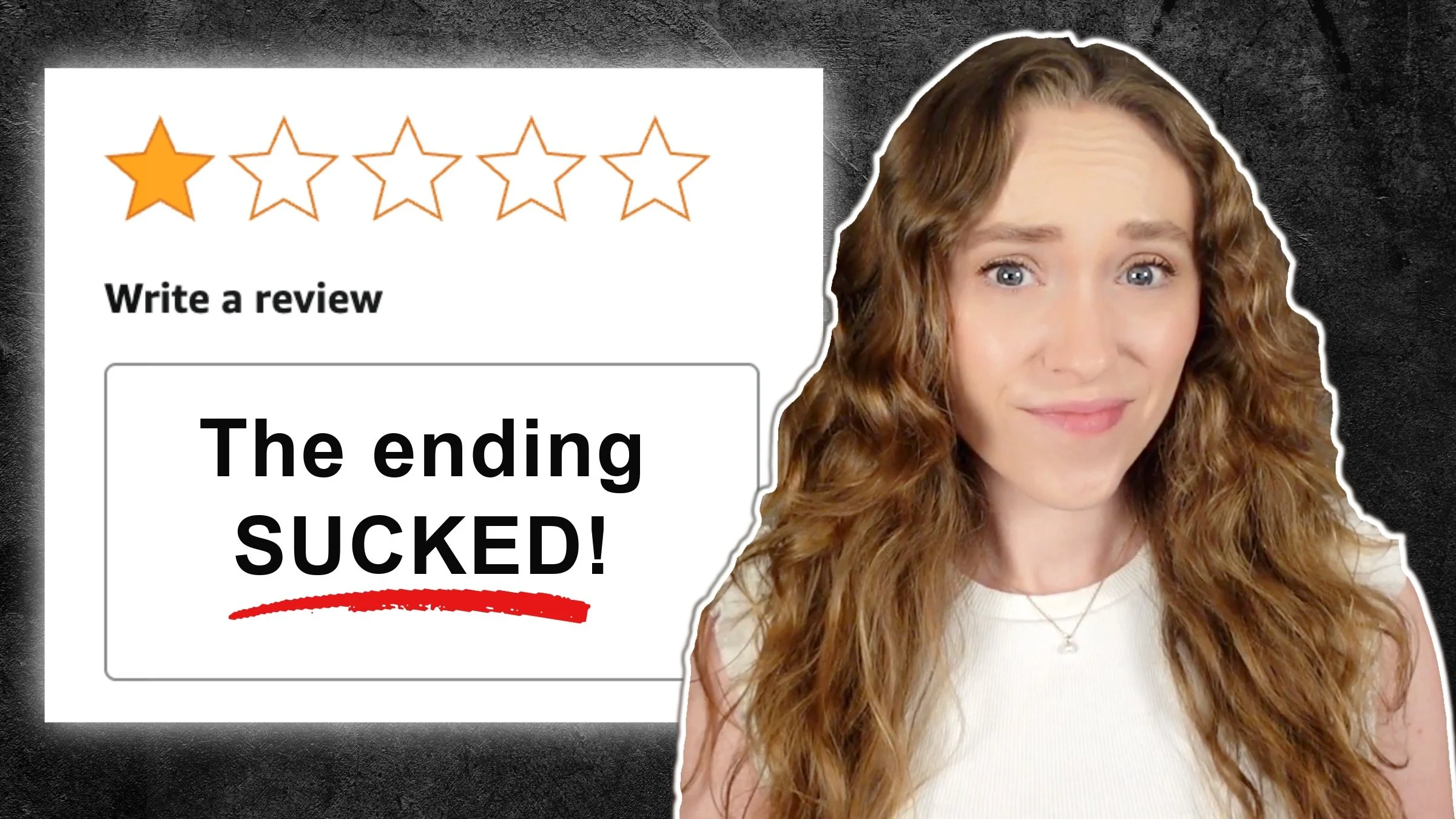5 Tips for Writing Compelling Character Backstory
HIT PLAY OR READ THE POST BELOW:
Backstory can make or break your characters. Solid backstory is critical to crafting layered, authentic-feeling characters that readers can connect to and become deeply invested in. But sometimes, authors focus character backstory on the wrong things, slap it on as an afterthought, or don't develop it enough.
So today, I'm going to go through five tactical strategies to help ensure your character backstory is serving your story and enhancing it. It's going to help you deepen your characterizations and make readers so much more connected to your characters.
1. Relate It to the Present
Your characters’ backstories should, in some way, be informing the present circumstances that we find them in. So, think about what specific past experiences of theirs have led them to their current position.
Their backstory should influence and inform their current desires, motivations, and fears. The reader should have a solid sense of how the character's past experiences contributed to their current beliefs and the objectives they are pursuing in the novel. The reader should be able to connect the cause and effect between what happened to the character before and what they are seeking to achieve now. This is going to allow us to understand the "why" behind their decisions.
So, for example, if a character's present goal is to become a sommelier, it would make sense to reveal via their backstory why they became so interested in this career path. You might explore: When did they first start enjoying wine? What was the context of that? When did they learn what a sommelier was and when did they first consider becoming one themselves? Who or what inspired them?
Having these answers is going to make us that much more invested in seeing if the character's goal pans out because we understand where it all stems from.
2. Strategically Reveal It
Some elements of character backstory should be given pretty early in your story, especially as it relates to your main character, as you are helping the reader form a connection to them.
But other elements of backstory can wait until deeper in the narrative. It's critical to be strategic in determining which pieces of backstory are revealed when. You want to maintain a balance of giving the reader enough insight into the characters to pique their interest and help us understand them, and withholding some amount of backstory to avoid info-dumping on the reader all at once.
The last thing you want is page after page after page of backstory. Instead, it should be sprinkled in organically at relevant points in the story when that backstory emerges in significance. So, pinpoint those moments in your plot where the backstory becomes relevant, and that will be a good place to give the reader that insight.
In terms of how you deliver that backstory, you generally have three options:
Using straight exposition. This is the most straightforward way of delivering the backstory. This is where you are just telling the reader what happened in that character's past.
Via a flashback, where you're immersing the reader in that character's specific experience of the memory.
Through dialogue. This is where a character is describing their backstory to another character via a conversation. This works especially well if you're delivering backstory for a non-POV character, because in that case, we can't see a flashback directly from their perspective and would only have access to exposition if the POV character knows that backstory themselves.
No method is better or worse than another. You want to have some mix of all of them in your story.
3. Include Some Struggle
Everyone faces struggles in life; that is the condition of being human. So, one goal of your character backstory should be to orient the reader to specific struggles and challenges that your character has faced.
This is going to be what makes them feel raw and authentic and vulnerable to the reader. We are going to connect so much more effectively with characters who we've seen go through some type of struggle. Including some struggle in the character's past does not mean you have to create a traumatic backstory for them. Some authors give their characters trauma in their backstory in the hope that it'll make readers empathize with them more. But if those traumatic events are not justified or serving a very clear purpose in the story, it can come across as melodramatic and unnecessary.
Remember that you can incorporate struggles that aren't necessarily traumatic in a character's backstory. Maybe they didn't get into the college that they wanted to, maybe they were passed up for a promotion, maybe they just suffered a recent breakup. I encourage you to brainstorm: what are the most defining moments of your characters’ lives? What hardships have they faced to get to where they are today?
4. Don’t Overtake the Main Plot
Backstory should ultimately never overshadow or distract us from the progression of the main storyline because this can hurt the pace of your novel and make the reader disengage. Your characters’ backstories should enhance and contribute to the main plot without ever overtaking it.
I've edited some novels where I'm learning about a character's backstory and it's frankly more interesting than the plot going on in the main storyline. I start to wonder why I’m not reading that novel where all of that stuff occurred!
If you are in the position of noticing that your backstory is taking up a lot of space in your narrative or it's very involved and there's a lot that you need to disclose to the reader, ask yourself if that backstory is actually the plot itself. It's possible that you might need to open your novel at a different point to encompass those events — say you need to bump up the timeline of your novel to show all of that lead-up happening in real time so the reader sees those events play out on the page, or you might need to create a dual timeline narrative, where we are seeing the present storyline progress but also getting insight into these past events that led up to the current situation. Some kind of restructuring might be necessary to make sure your backstory isn't overtaking or overcrowding the narrative.
5. Reflect a Broader Understanding of the Character
Ultimately, the amount of backstory that you reveal in the pages of your novel should be a small sliver of that character's entire life as you know it.
Obviously, you're not going to have enough room in the pages of the novel itself to tell every character's full life story. But you as the author should know the full life story to some degree. Then, it'll be your job to choose what the reader actually needs to know for the purposes of this specific story.
As an editor, sometimes I will recommend that an author cuts an overly long flashback or section of backstory that just isn't that relevant to the main plot at hand. But that doesn't mean it wasn't valuable for you to write that section of the story because it helped you explore and understand that character in more depth and nuance. I know authors who create character profiles that span multiple pages for every character in their book. It helps them get to know who they are, what experiences they've had, and what they want now.
But not all of that material actually makes it into the novel itself. It's super important for you to do this work as the author of figuring out who your characters are, because that is going to feed into how those characters portray themselves in the scenes you keep in the novel.
I hope these tips helped you better understand how to write effective character backstory and make your characterizations feel more authentic and real. Now, I encourage you to put this into practice with a simple character backstory exercise: write down one defining moment of your main character's past.
Thank you so much for reading, and happy writing!






